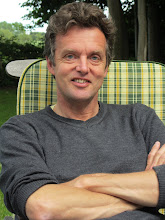A VISIT TO AN ISLAND
Denmark is a country of islands; 406 of them, in fact. Plus Greenland, a pretty big island in its own right, and the Faroe Islands (oh, and Jutland, which sticks up from Germany). The many islands mean that no Dane lives more than 52km (about 30 miles) from the sea.
We live in the southern part of Fünen, the big island in the middle, which has Odense as its main town. Although itself an island, Fünen feels like part of the mainland, partly because it is fairly big, but mainly because it is connected to both Jutland and Sealand by bridges (the latter 18km long). Off the southern coast of Fünen, in what is known in Danish as the "island sea", are a host of small islands, some of them inhabited, many of them not. I have just come back from a 2-day visit to Aeroe with my wife and daughter. It was lovely.
Since Aeroe lies due east of the Danish-German frontier on Jutland, the island throughout much of the Middle Ages came under the duchy of Schlesvig-Holstein, either wholly or in part. This made relations with the Danish Kingdom proper rather tricky at times, owing to the curious constitutional anomaly whereby the Danish King was also Duke of Schleswig-Holstein, albeit in personam. In 1750, the island was united under the duchy; and when the Prussians scored their great victory over the Danes in 1864, it should have gone to the Germans along with the rest of the duchy. However, it was saved for Denmark by swapping it for royal enclaves of land elsewhere.
How does a small island like Aeroe, roughly 30km by 8km and with just under 7,000 people, survive in the modern economy? Pretty well, it seems. There are ferries to four different places, and a reasonable bus service on the island itself. The original small farms have been consolidated, and the superfluous buildings converted to summer houses, frequented by both Danes and Germans. In the small fishing towns of Aeroeskoebing and Marstal, the old mediaeval houses have been well preserved, providing a haven for artists of one kind or another. The debilitating effects of industry, roads, and heavy lorries have been kept at bay.
We took the ferry over on a fantastic autumn day, with the Baltic Sea as calm as a millpond. Sitting on the southern cliffs at sunset, we saw the sun go down over the Flensburg Sound, and could see south towards Eckernfoerde and Kiel. It was easy to see how the Hanseatic League would have got going in the Middle Ages; sea links between Northern Germany and Southern Denmark would have been much easier than land links to (say) Bavaria. Pottering about in the excellent maritime museum in Marstal, I learned an awful lot about sailing ships. I also managed to buy a Norwegian wool sweater for a very cheap price. Altogether a wonderful little autumn mini-break.
Walter Blotscher
Tuesday, 19 October 2010
Subscribe to:
Post Comments (Atom)

No comments:
Post a Comment